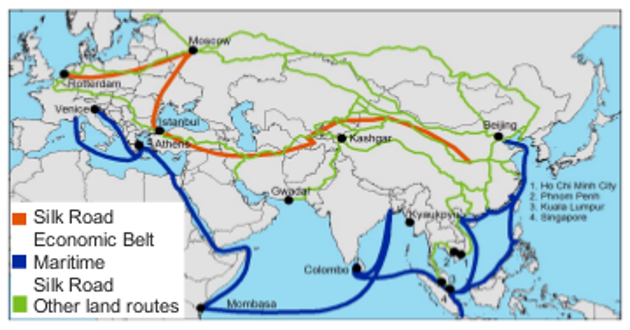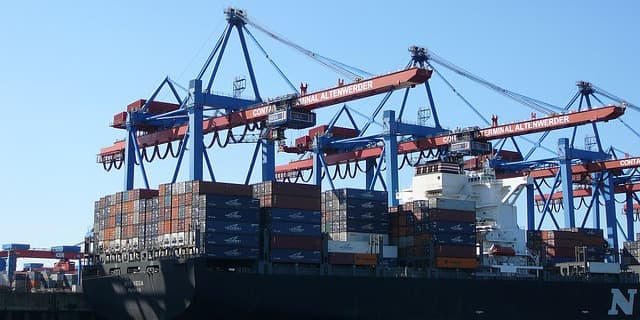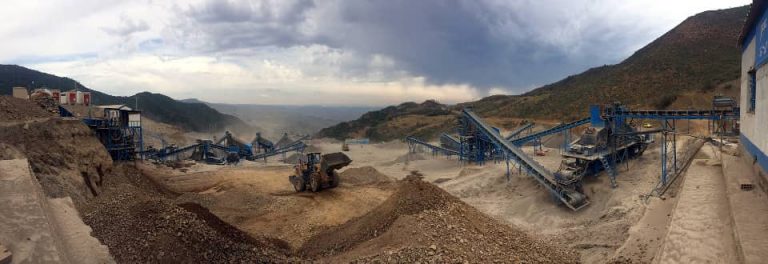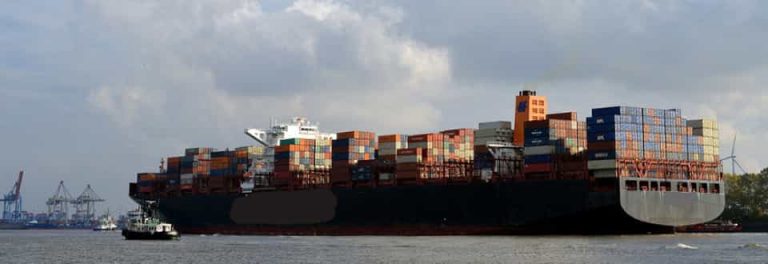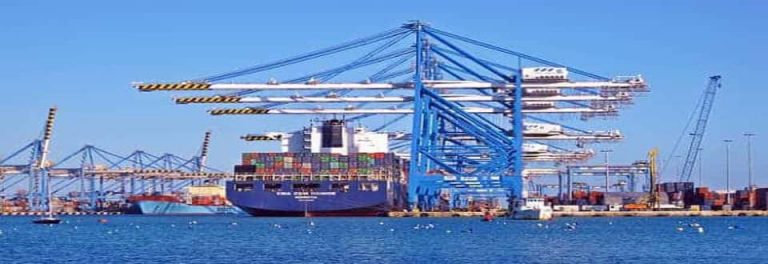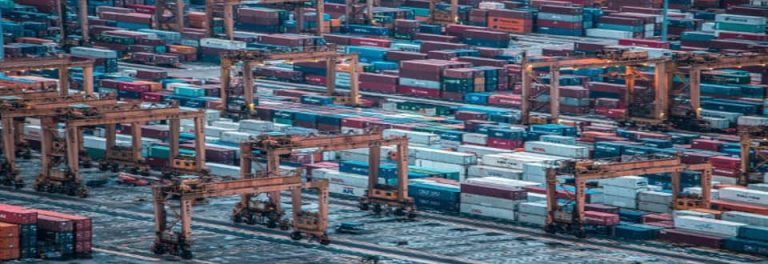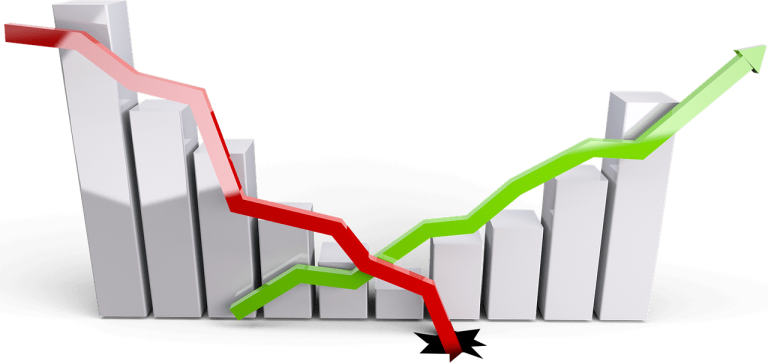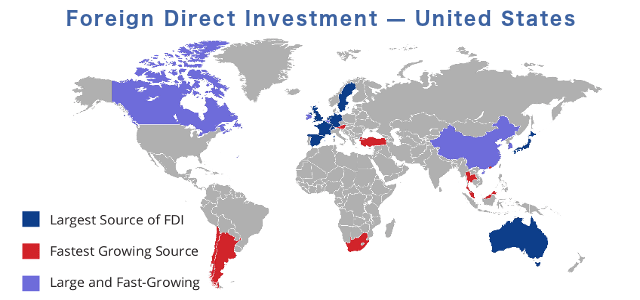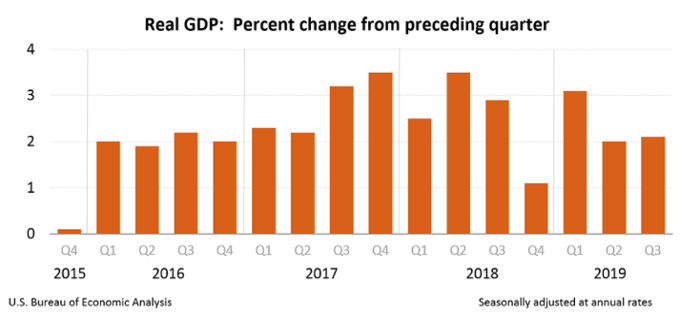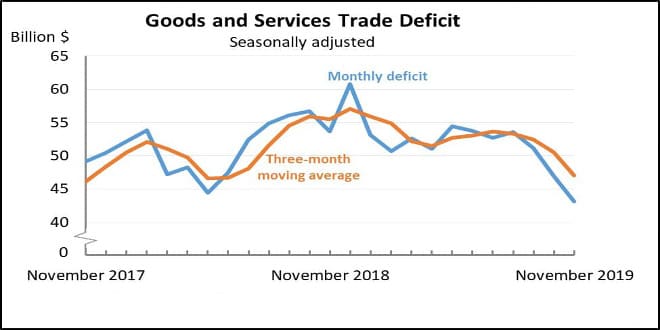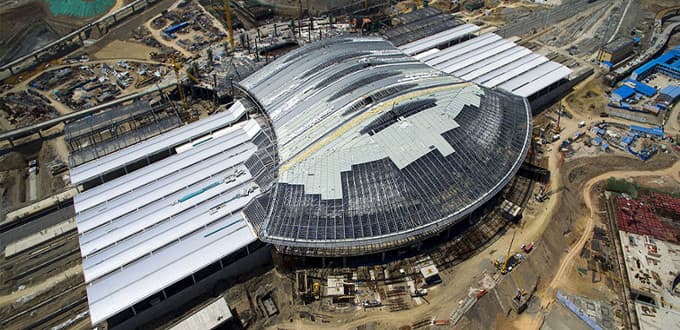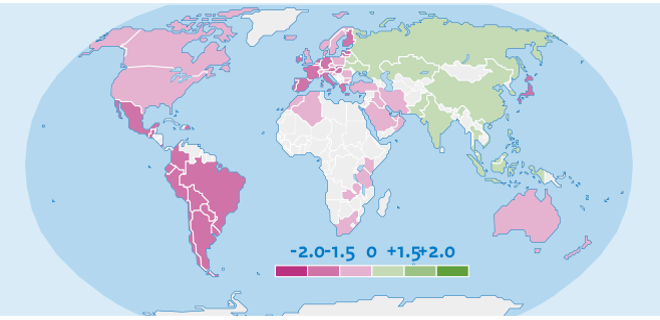An Interconnected & Interlinked World
of Business, Trade, and Commerce.
of Business, Trade, and Commerce.
Foreign Direct Investment and Business in China
Fnancial Environment || Trend and Prospects

Foreign direct investment (FDI) plays an important role in the development and growth of a country’s economy. With the perspective of an investing enterprise, a decent Return on Investment (ROI), an opportunity to make headway into the recipient economy’s market, and, above all, the safety of the investment are the prime considerations in making investment decisions. Therefore, the growth of FDI inflow into an economy —and its trend, in general, reflect upon the overall state of the ‘health’ of the host country’s economy.
It is understandable that Foreign Direct Investments flows into the economies that offer stable and supportive environment for the business. The size of the host economy’s market, state of it’s infrastructure, and the availability, affordability, and skill of the workforce all play a very important role in attracting the flow of Foreign Direct Investment.
Emergy Global Magnet of FDI Inward-Flow
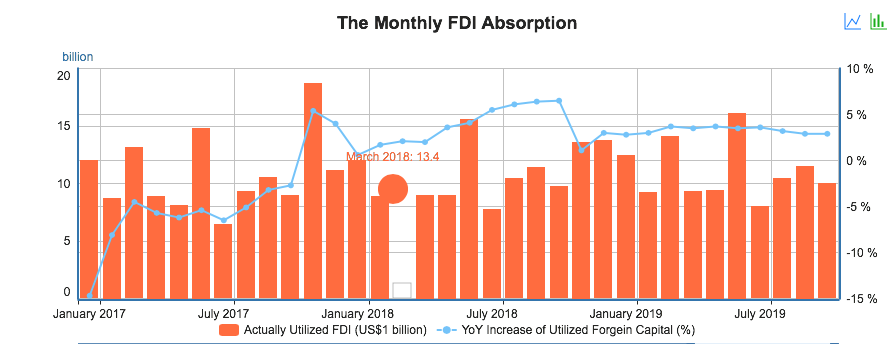
China has emerged as the showcase example of a Model destination for FDI inflow. It has a very large consumer base with ever expanding purchasing power, an ultra modern infrastructure, skilled and well trained workforce, and, to top it all off, is the Chinese government’s zealous and persistent drive to open up it markets—from manufacturing to banking and fiance, to foreign enterprises.China is moving ahead with its commitment to reduce restrictions on Foreign Direct Investment and address difficulties facing foreign companies investing in the country. In Dcember 2019, Chinese Suprem Court passed the Laws to further protect the rights of foreign investors.
According to the transcript posted on the Ministry of Commerce’s website, China will now allow full foreign ownership of companies in more areas of the economy and will reduce the number of industries in which foreign investment was restricted or barred.
Despite the trade wars and the deep rooted concerns in some certain circles of ‘think-tanks’ in the West, China has managed to secure a place for itself as one of the most favorable destination for Foreign Direct Investment—especially in the high-tech and finance sectors.
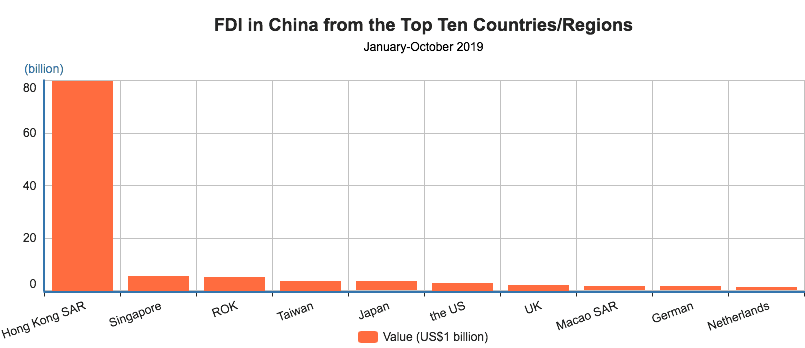
As the Made in China 2025 (MIC 2025) project is being ushered in at a much pace faster than was expected, and the world is just coming to grasp it’s full scope and extent, it is also opening up new opportunities for investment in China. The Speedy implementation of 5 G in China and the availability of this super fast communication service in major cities is a major attraction for Foreign Direct Investment in China. It is further boosting the strength and desirability of its already expansive infrastructure—offering fast and secure communication and other related services to businesses and users.
in China and the availability of this super fast communication service in major cities is a major attraction for Foreign Direct Investment in China. It is further boosting the strength and desirability of its already expansive infrastructure—offering fast and secure communication and other related services to businesses and users.
China has already been recognized to have won the race for 5G supremacy. The country is spending enormous amount of resources and money to roll out 5G infrastructure at a blistering pace. Notice that China just introduced commercial 5G plans towards the end of October 2019, two months ahead of schedule. At the close of the year 2019, 5G networks has already covered some 50 Chinese cities. And, the mobile plans for the advanced 5G technology starts at 128 yuan ($18).
The implications of these technical advances and achievements are enormous. The economic adjustments related ups and downs aside, we are looking at unprecedented opportunities. We are in a world that is fast changing right in front of our eyes.
More than mere Foreign Direct Investment, Chinas has emerged as the magnet for hgih-tech industry, and also as the top destination for both the R & D and a hub for the transnational and multinational corporate relocation.
The US vs China – Comparing The FDI Flows
According to the 2019 World Investment Report—UNCTAD, China was ranked the world’s second largest FDI recipient after United States. China’s economy was ranked the second most attractive to multinational companies for 2017-2019, only behind the U.S. Foreign Direct Investment in China is the living Manifestation of the success of China’s Open Door Policy. With its continuous expansion of imports and exports to all over the world, it naturally becoming a logical choice and a safe-heaven fro investment.
When comparing the FDI-inFlows into two of the world’s largest economies, the United States and China, most of the time the factor that gets neglected is the dominance of the US Dollar and its effect on FDI Flows. For Multinationals and International enterprises, it becomes pertinent to direct a certain portion of their FDI allocations to the Unite States.
US Dollar’s role in the global trade settlements plays (almost 54 percent of the total SDR share) an important role in effecting the flow of FDI in the U.S. The point that needs contemplation is; what really is the Real Value of the US Dollar. Are we reaching the point where the role and value of the Chinese Renminbi and US Dollar is going to switch! But, that is topic for another time.
Realized (Utilized) FDI Flow || in Perspective
The data compiled from the Chinese Ministry of Commerce Website presents the actual sate of Foreign Direct Investment Flow into the country.
While the charts present the state of the FDI Inflow into China visually, the table at the end provides the historical data going all the way back to the year 1983. together, the information compiled here serves to give the investors and business more tools to make informed decisions.
Imports and Exports:
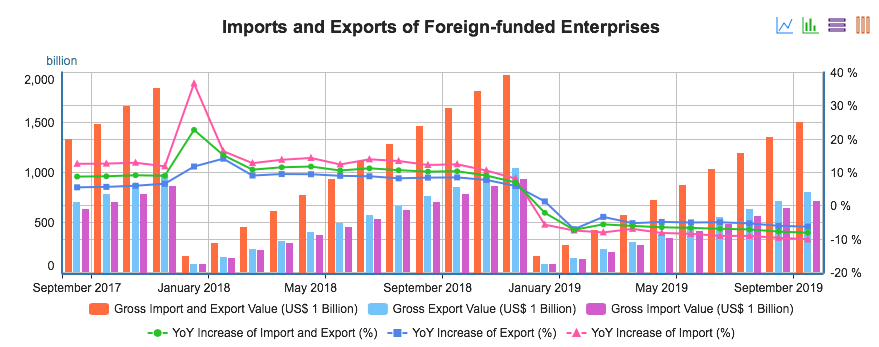
- In January-October 2019, China’s total import and export value reached US$3,735.63 billion, with a decrease of 2.5% year on year (the same as below). The exports were US$2037.96 billion, with a decrease of 0.2%, and the imports were US$1,697.67 billion, with a decrease of 5.1%. The trade surplus was US$340.29 billion, increasing by 34.9%.
- In October, the total value of the Chinese imports and exports was US$383.05 billion, with a decrease of 3.4%. The exports were US$212.93 billion, decreasing by 0.9% and the imports were US$170.12 billion, decreasing by 6.4%. The trade surplus was US$42.81 billion, with an increase of 29.8%.
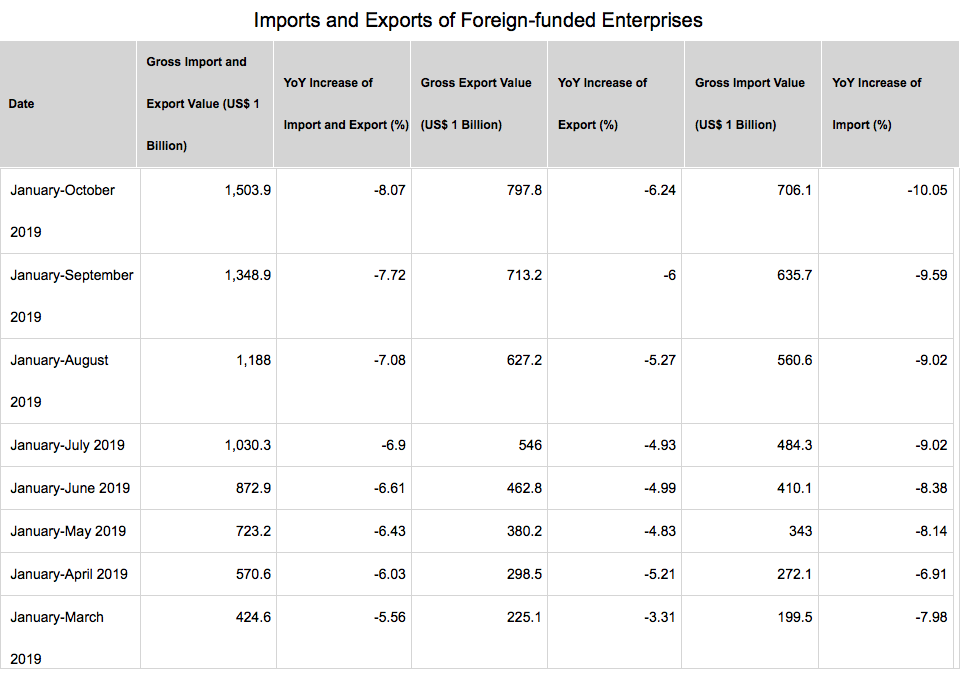
FDI Absorption in China:
For the period January-November 2019, China’s Foreign Investment Absorption mainly presents the following Data and specifics:
- The actually utilized foreign capital maintained stable growth.
- In January-November, 36,747 foreign invested companies were newly established; the actually utilized foreign capital reached 845.94 billion yuan, increasing by 6.0% year on year (equivalent to US$124.39 billion, up 2.6% year on year, excluding the statistics of banking, securities and insurance, the same below).
- In November, the actually utilized foreign capital reached 93.53 billion yuan, increasing by 1.5% year on year (equivalent to US$13.62 billion, up 0.1% year on year).
- The foreign investment absorption of high-tech industry maintained high growth.
- The actually utilized foreign capital of high-tech industry reached 240.7 billion yuan, up 27.6% year on year, taking up 28.5%. The actually utilized foreign capital of the high-tech manufacturing industry reached 83.43 billion yuan, up 5.7% year on year.
- Specific, the actually utilized foreign capital of the pharmaceutical industry and the electronic and communication device manufacturing industry increased by 43.9% and 10.6% respectively year on year. The actually utilized foreign capital of the hi-tech service industry reached 157.27 billion yuan, up 43.4% year on year.
- Specific to services, the actually utilized foreign capital of information service, R&D and design service and scientific achievement transformation service industry increased by 28.3%, 60.7% and 67.8% respectively year on year.
- The foreign investment absorption in the eastern, central and western regions grew steadily and the foreign investment absorption in the pilot free trade zones maintained sound growth.
- The actually utilized foreign capital in the eastern, central and western regions increased by 6.0%, 5.6% and 7.3% year on year respectively. The actually utilized foreign capital in the pilot free trade zones was 121.26 billion yuan, taking up 14.3%.
FDI Trends—Comparing with 2018:
Foreign Direct Investment (FDI) into China was up 3 percent year-on-year to US $135 Billion in 2018.
For Information Purposes: The Definition of FDI
[Foreign direct investment (FDI) is a category of investment that reflects the objective of establishing a lasting interest by a resident enterprise in one economy (direct investor) in an enterprise (direct investment enterprise) that is resident in an economy other than that of the direct investor. The lasting interest implies the existence of a long-term relationship between the direct investor and the direct investment enterprise and a significant degree of influence on the management of the enterprise. The direct or indirect ownership of 10% or more of the voting power of an enterprise resident in one economy by an investor resident in another economy is evidence of such a relationship. [ Source: OECD ]
Historical Data of FDI inflow in China || Year 1983-2019
[Note: Data are in Billions of US Dollars]
| Date | Actually Used FDI” “YoY FDI Change (%)” | YoY Change in Quantity(%) | Newly Foreign-Invested Enterprises (Quantity) | YoY Change in Quantity(%) |
|---|---|---|---|---|
| January-October 2019 | 110.780 | 2.9 | 33,407 | -32.6 |
| January-September 2019 | 100.780 | 2.9 | 30,871 | -32.8 |
| January-August 2019 | 89.260 | 3.2 | 27,704 | -33 |
| January-July 2019 | 78.800 | 3.6 | 24,050 | -31.8 |
| January-June 2019 | 70.740 | 3.5 | 20,131 | -32 |
| January-May 2019 | 54.610 | 3.7 | 16,460 | -31.5 |
| January-April 2019 | 45.140 | 3.5 | 13,039 | -31.4 |
| January-March 2019 | 35.800 | 3.7 | 9,616 | -32.9 |
| January-February 2019 | 21.690 | 3 | 6,509 | -26.4 |
| January 2019 | 12.410 | 2.8 | 4,646 | -10.6 |
| January-December 2018 | 134.970 | 3 | 60,533 | 69.8 |
| January-November 2018 | 121.260 | 1.1 | 54,703 | 77.5 |
| January-October 2018 | 107.660 | 6.5 | 49,545 | 89.3 |
| January-September 2018 | 97.960 | 6.4 | 45,922 | 95.1 |
| January-August 2018 | 86.500 | 6.1 | 41,331 | 102.70% |
| January-July 2018 | 76.070 | 5.5 | 35,239 | 99.10% |
| January-June 2018 | 68.320 | 4.1 | 29,591 | 96.60 |
| January-May 2018 | 52.660 | 3.6 | 24,026 | 97.60 |
| January-April 2018 | 43.600 | 2 | 19,002 | 95.40 |
| January-March 2018 | 34.510 | 2.1 | 14,340 | 124.70 |
| January-February 2018 | 21.060 | 1.7 | 8,848 | 129.20 |
| January 2018 | 12.070 | 0.6 | 5,197 | 158.60 |
| January-December 2017 | 131.040 | 4 | 35,652 | 27.80 |
| January-November 2017 | 119.910 | 5.4 | 30,815 | 26.50 |
| January-October 2017 | 101.120 | -2.7 | 26,174 | 15.90 |
| January-September 2017 | 92.090 | -3.2 | 23,541 | 10.60 |
| January-August 2017 | 81.500 | -5.1 | 20,389 | 10.00 |
| January-July 2017 | 72.140 | -6.5 | 17,695 | 12.00 |
| January-June 2017 | 65.650 | -5.4 | 15,053 | 12.30 |
| January-May 2017 | 50.850 | -6.2 | 12,159 | 11.90 |
| January-April 2017 | 42.730 | -5.7 | 9,726 | 17.20 |
| January-March 2017 | 33.810 | -4.5 | 6,383 | 7.20 |
| January-February 2017 | 20.700 | -8.1 | 3,860 | 13.70 |
| January 2017 | 12.000 | -14.7 | 2,010 | 0.10 |
| January-December 2016 | 126.000 | -0.2 | 27,900 | 5.0 |
| January-November 2016 | 113.790 | -0.2 | 24,355 | 3.0 |
| January-October 2016 | 103.910 | 0.2 | 22,580 | 7.40 |
| January-September 2016 | 95.090 | 0.2 | 21,292 | 12.20 |
| January-August 2016 | 85.880 | 0.6 | 18,538 | 10.20 |
| January-July 2016 | 77.130 | 0.7 | 15,802 | 9.70 |
| January-June 2016 | 69.420 | 1.5 | 13,402 | 12.50 |
| January-May 2016 | 54.190 | 0.7 | 10,871 | 13.50 |
| January-April 2016 | 45.300 | 1.8 | 8,298 | 6.50 |
| January-March 2016 | 35.420 | 1.5 | 5,956 | 1.60 |
| January-February 2016 | 22.520 | 0.2 | 3,396 | -11.40 |
| January 2016 | 14.070 | 1.1 | 2,008 | -11.40 |
| January-December 2015 | 126.270 | 5.6 | 26,575 | 11.80 |
| January-November 2015 | 114.040 | 7.3 | 23,648 | 11.0 |
| January-October 2015 | 103.680 | 8.1 | 21,022 | 9.30 |
| January-September 2015 | 94.900 | 8.6 | 18,980 | 10.10 |
| January-August 2015 | 85.340 | 8.9 | 16,827 | 10.70 |
| January-July 2015 | 76.630 | 7.7 | 14,409 | 8.80 |
| January-June 2015 | 68.410 | 8 | 11,914 | 8.60 |
| January-May 2015 | 53.830 | 10.1 | 9,582 | 9.60 |
| January-April 2015 | 44.490 | 10.5 | 7,790 | 17.0 |
| January-March 2015 | 34.880 | 10.6 | 5,861 | 22.40 |
| January-February 2015 | 22.480 | 16.4 | 3,831 | 38.60 |
| January 2015 | 13.920 | 29.3 | 2,266 | 31.80 |
| January-December 2014 | 119.560 | 1.7 | 23,778 | 4.40 |
| January-November 2014 | 106.240 | 0.7 | 21,296 | 4.20 |
| January-October 2014 | 95.880 | -1.2 | 19,239 | 5.80 |
| January-September 2014 | 87.360 | -1.4 | 17,247 | 5.50 |
| January-August 2014 | 78.340 | -1.8 | 15,200 | 5.0 |
| January-July 2014 | 71.140 | -0.4 | 13,249 | 4.90 |
| January-June 2014 | 63.330 | 2.2 | 10,973 | 3.20 |
| January-May 2014 | 48.910 | 2.8 | 8,744 | 1.60 |
| January-April 2014 | 40.270 | 5 | 6,661 | -0.40 |
| January-March 2014 | 31.549 | 5.5 | 4,787 | -0.73 |
| January-February 2014 | 19.310 | 10.4 | 2,764 | -5.18 |
| January 2014 | 10.763 | 16.1 | 1,719 | -8.71 |
| January-December 2013 | 117.586 | 5.25 | 22,773 | -8.63 |
| January-November 2013 | 105.506 | 5.48 | 20,434 | -9.19 |
| January-October 2013 | 97.026 | 5.77 | 18,184 | -9.18 |
| January-September 2013 | 88.609 | 6.22 | 16,351 | -9.29 |
| January-August 2013 | 79.770 | 6.37 | 14,480 | -8.22 |
| January-July 2013 | 71.392 | 7.09 | 12,626 | -7.68 |
| January-June 2013 | 61.984 | 4.9 | 10,630 | -9.18 |
| January-May 2013 | 47.595 | 1.03 | 8,609 | -7.04 |
| January-April 2013 | 38.340 | 1.21 | 6,687 | -4.69 |
| January-March 2013 | 29.905 | 1.44 | 4,822 | -10.36% |
| January-February 2013 | 17.484 | -1.35 | 2,915 | -3 |
| January 2013 | 9.270 | -7.27 | 1,883 | 34.31 |
| January-December 2012 | 111.716 | -3.7 | 24,925 | -10.06 |
| January-November 2012 | 100.022 | -3.61 | 22,503 | -10.30 |
| January-October 2012 | 91.736 | -3.45 | 20,021 | -10.49 |
| January-September 2012 | 83.423 | -3.76 | 18,025 | -11.67 |
| January-August 2012 | 74.994 | -3.4 | 15,777 | -12.38 |
| January-July 2012 | 66.669 | -3.64 | 13,677 | -12.33 |
| January-June 2012 | 59.089 | -2.96 | 11,705 | -13.05 |
| January-May 2012 | 47.110 | -1.91 | 9,261 | -12.16 |
| January-April 2012 | 37.881 | -2.38 | 7,016 | -13.94 |
| January-March 2012 | 29.480 | -2.83 | 5,379 | -9.40 |
| January-February 2012 | 17.723 | -0.56 | 3,005 | -11.59 |
| January 2012 | 9.997 | -0.3 | 1,402 | -37.49 |
| January-December 2011 | 116.011 | 9.72 | 27,712 | 1.12 |
| January-November 2011 | 103.769 | 13.15 | 25,086 | 3.23 |
| January-October 2011 | 95.012 | 15.86 | 22,368 | 5.60 |
| January-September 2011 | 86.679 | 16.6 | 20,407 | 6.24 |
| January-August 2011 | 77.634 | 17.71 | 18,006 | 7.68 |
| January-July 2011 | 69.187 | 18.6 | 15,600 | 7.89 |
| January-June 2011 | 60.891 | 18.4 | 13,462 | 8.77 |
| January-May 2011 | 48.028 | 23.51 | 10,543 | 9.39 |
| January-April 2011 | 39.182 | 25.4 | 8,152 | 8.61 |
| January-March 2011 | 30.340 | 29.42 | 5,937 | 8.76 |
| January-February 2011 | 17.823 | 27.09 | 3,399 | 7.46 |
| January 2011 | 10.028 | 23.36 | 2,243 | 20.20 |
| January-December 2010 | 108.821 | 18.54 | 27,406 | 16.94 |
| January-November 2010 | 93.222 | 17.15 | 24,302 | 17.97 |
| January-October 2010 | 83.472 | 15.23 | 21,181 | 16.62 |
| January-September 2010 | 75.719 | 16.03 | 19,209 | 17.50 |
| January-August 2010 | 66.983 | 17.18 | 16,721 | 18.33 |
| January-July 2010 | 59.314 | 19.7 | 14,459 | 17.90 |
| January-June 2010 | 52.075 | 18.32 | 12,377 | 18.79 |
| January-May 2010 | 39.508 | 13.75 | 9,638 | 22.15 |
| January-April 2010 | 31.245 | 10.74 | 7,506 | 20.27 |
| January-March 2010 | 23.819 | 7.2 | 5,459 | 19.87 |
| January-February 2010 | 14.199 | 4.02 | 3,163 | 14.56 |
| January 2010 | 8.235 | 6.15 | 1,866 | 24.73 |
| January-December 2009 | 91.804 | -3.62 | 23,435 | -14.83 |
| January-November 2009 | 79.577 | -10.69 | 20,600 | -17.44 |
| January-October 2009 | 72.437 | -13.28 | 18,163 | -20.11 |
| January-September 2009 | 65.258 | -14.63 | 16,348 | -21.41 |
| January-August 2009 | 57.161 | -17.83 | 14,131 | -24.82 |
| January-July 2009 | 49.554 | -20.5 | 12,264 | -27.40 |
| January-June 2009 | 44.011 | -18.1 | 10,419 | -28.40 |
| January-May 2009 | 34.733 | -21 | 7,890 | -33.80 |
| January-April 2009 | 28.214 | -21.7 | 6,241 | -34.20 |
| January-March 2009 | 22.219 | -21.1 | 4,554 | -34.50 |
| January-February 2009 | 13.650 | -26.5 | 2,761 | -36.90 |
| January 2009 | 7.758 | -32.2 | 1,496 | -48.70 |
| January-December 2008 | 95.253 | 21.6 | 27,514 | -27.40 |
| January-November 2008 | 89.103 | 24.2 | 24,952 | -27.50 |
| January-October 2008 | 83.536 | 32.2 | 22,736 | -26.20 |
| January-September 2008 | 76.441 | 36.5 | 20,801 | -26.30 |
| January-August 2008 | 69.568 | 38.2 | 18,797 | -24.40 |
| January-July 2008 | 62.323 | 41 | 16,891 | -22.20 |
| January-June 2008 | 53.721 | 41.5 | 14,544 | -22.20 |
| January-May 2008 | 43.985 | 52 | 11,915 | -21 |
| January-April 2008 | 36.024 | 56.1 | 9,490 | -23.20 |
| January-March 2008 | 28.158 | 59.1 | 6,949 | -25.30 |
| January-February 2008 | 18.564 | 72.1 | 4,372 | -23.50 |
| January 2008 | 11.438 | 105.2 | 2,918 | -13.40 |
| January-December 2007 | 74.768 | 18.64 | 37,871 | -8.69 |
| January-December 2006 | 63.021 | 4.47 | 41,473 | -5.75 |
| January-December 2005 | 60.325 | -0.5 | 44,001 | 0.77 |
| January-December 2004 | 60.630 | 13.32 | 43,664 | 6.29 |
| January-December 2003 | 53.505 | 1.44 | 41,081 | 20.22 |
| January-December 2002 | 52.743 | 12.51 | 34,171 | 30.72 |
| January-December 2001 | 46.878 | 15.14 | 26,140 | 16.97 |
| January-December 2000 | 40.715 | 0.98 | 22,347 | 32.09 |
| January-December 1999 | 40.319 | -11.31 | 16,918 | -14.55 |
| January-December 1998 | 45.463 | 0.46 | 19,799 | -5.72 |
| January-December 1997 | 45.257 | 8.46 | 21,001 | -14.48 |
| January-December 1996 | 41.726 | 11.21 | 24,556 | -33.65 |
| January-December 1995 | 37.521 | 11.12 | 37,011 | -22.16 |
| January-December 1994 | 33.767 | 22.72 | 47,549 | -43.01 |
| January-December 1993 | 27.515 | 149.95 | 83,437 | 71.10 |
| January-December 1992 | 11.008 | 152.13 | 48,764 | 275.74 |
| January-December 1991 | 4.366 | 25.21 | 12,978 | 78.44 |
| January-December 1990 | 3.487 | 2.8 | 7,273 | 25.85 |
| January-December 1989 | 3.392 | 6.2 | 5,779 | -2.79 |
| January-December 1988 | 3.194 | 38.03 | 5,945 | 166.23 |
| January-December 1987 | 2.314 | 3.12 | 2,233 | 49.07 |
| January-December 1986 | 2.244 | 14.72 | 1,498 | -51.25 |
| January-December 1985 | 1.956 | 37.75 | 3,073 | 65.57 |
| January-December 1984 | 1.420 | 54.35 | 1,856 | 294.89 |
| January-December 1983 | 0.920 | 0 | 470 | 0 |
| Date | Actually Used FDI” “YoY FDI Change (%)” | YoY Change in Quantity(%) | Newly Foreign-Invested Enterprises (Quantity) | YoY Change in Quantity(%) |
{ Source: Ministry of Commerce Website }
元 $ € ¥ ₿
Information
Reports & Analysis
To Help Evaluate
The Potentials For
Business
&
Investment
In an Interconnected
World
-
The Belt and Road Initiative & Made in China 2025
Riding high on the fast tracks of the Belt and Road Initiative, Made in China 2025 is rapidly making inroads into the countries... Fierce competition from Chinese companies...
-
MIC 2025 || The Changing Landscape of Chinese Economy
It was in 2015 that China unveiled its Made in China 2025 (MIC 2015) project. Since then, Chinese economy is metamorphosing and changing at a breakneck pace...
-
Top Freight Forwarders by Country
Large scale ‘local area’ Freight Forwarders listed here, through their contacts and arrangements, also provide services on a global scale. Their main strength though lies in...
-
Most of the Top Global Freight Forwarders listed here serve all the major ports across the Globe, and, through relationships with their business partners, also provide a full suite of...
-
Glossary: Shipping, Freight, & Supply Chain Logistics
Like any other professional field, the shipping/freight industry has its own unique set of terminology—A rather extensive and complex one. Here we have compiled the Glossary of the most useful...
-
Global Foreign Direct Investment—Inward Flow
A comprehensive and historical Global FDI Inward-Flow Data spanning the period of 2000—2018. The data is compiled by grouping and associating a variety of economies together; by the state of...
-
The new phase of economy in China is an opportunity for the businesses. The emphasis is now on raising the living standards of masses, implementing supply-side reforms, and opening up...
-
Top 50 Container Ports in The World
Large Capacity & Super Busy Container Ports in a country are the pointers of country’s economic potentials...Bulk of the world trade in goods—more than 90% of it...
-
Supply Chain | Definition and Objectives
Supply Chain can be viewed as a network connecting a business to its suppliers and distributers to facilitate the production, processing, and distribution of its products to the consumers. It incorporates...
-
Global Business | Supply Chain & Logistics
With the technology—and global eCommerce platforms like Ali Baba, JD.com, Tancent, Kaola, Lazada, WooCommerce, VTEX, and Shopify etc, it is easier to sell products and services Globally.
-
Shipping Logistics | The Role of Service Providers
The logistics of getting the goods delivered to faraway destinations—especially to foreign markets, is a complex business. It requires the services of outside entities to...
-
Freight Forwarders | Role in Global Commerce
Freight Forwarders specialize in taking care of the entire process for their shippers | from warehousing to the shipping of their merchandise. They act as an agent and intermediary...
-
Real GDP | Nominal GDP vs GDP PPP
In evaluating and analyzing global investment opportunities and, also in the business decision making process, we need to know the actual comparative state of the economies of various countries and...
-
With the perspective of charting course for the expansion of business or investment, an analytical review of the ‘real value’ of a nation’s/region’s GDP is essential. To this end, an understanding of the methodologies used in...
-
New Global Business Order—The Global Information Stage
Whatever the business be, it has to be ready to play on the Global Stage. It is the global arena. The Supply-and-Demand chain is global. ..There is no business that can be considered as purely a...
-
Global Real GDP Growth Rate—And Forecast
Real GDP provides an inflation-adjusted measure that reflects the true value of all goods and services produced by an economy in term of real value of...
-
Foreign Direct Investment Inward Flow in The US—A Global Perspective
The Inflow of FDI in the U.S. was up by US $50 Billion in the 3rd quarter of 2019. FDI plays an essential role in the economic growth, creating jobs, and driving exports...The tables present...
-
US Gross Domestic Product: 2019—By Quarters
Real US GDP increased at an annualized rate of 2.1 percent in the 3rd quarter of 2019—that was up from the second quarter. Real gross domestic income (GDI)...
-
Foreign Direct Investment—Impact and Analysis
Foreign Direct Investment (FDI) plays an important role in the development and growth of any country’s economy - especially the developing countries. But, in actual practice...
-
Foreign Direct Investment and Business in China
China is establishing itself as the Model Destination for FDI inflow and a hub for corporate relocation and R&D...
-
US Global Trade & Top Trading Partners | Year-to-Date
Since hitting the peak in November 2018, U.S. global trade deficit in goods and services has been on the decline. But, the declining trends in both Imports and exports...
-
The Growth of Mobile Payments and Virtual Banking—A Global Perspective
Mobile Payments, Virtual Banking, and other modes of mobile transactions - both at consumer and commercial level, are growing globally at an ultra fast pace — more so in China and Asia Pacific and...
-
Belt and Road Initiative—Objectives & Achievements
As of the end 2019, the BRI — a project to interlink the global economies with China, includes 140 countries—encompasing more than 2/3 of the world’s population. The trade on BRI is...
-
In 2019 US imports from China dropped more than 12.5 percent to US$456 billion (Source: United States’ Census Bureau ) while China’s imports from the US dropped to US$122.7 billion...
-
Humans by nature - or by need, are traders. We trade our work, services, produce, or products for money. Then, we exchange that money for the goods and services that we need. Any excess/leftover money is either directly invested or deposited in the banks—thus, making the money to recirculate in the economy again.
Information, Data, and Reports organized alphabetically By Topic:
Global Business
Investment
Trade & Commerce
Always The Key to
to Wealth & Prosperity
Since before the days of
Camel Caravans & Sailboats


